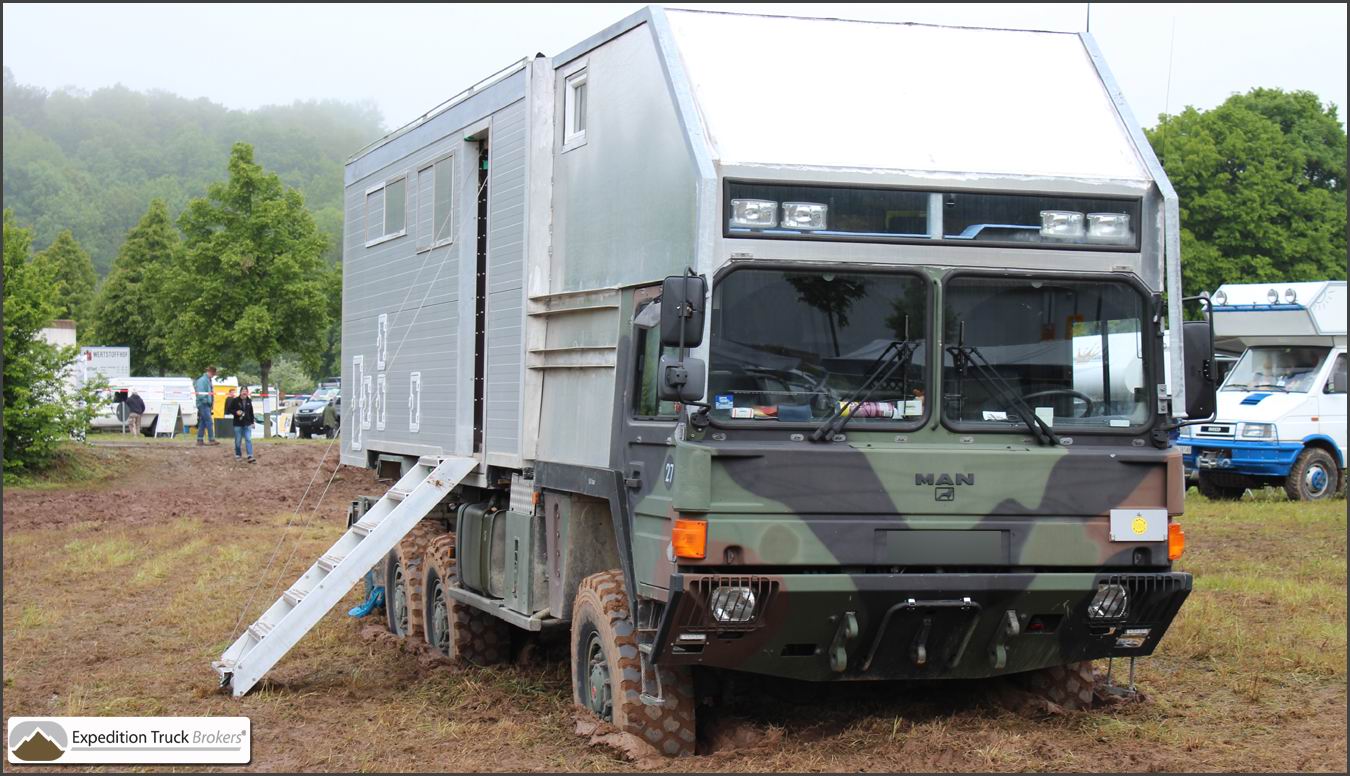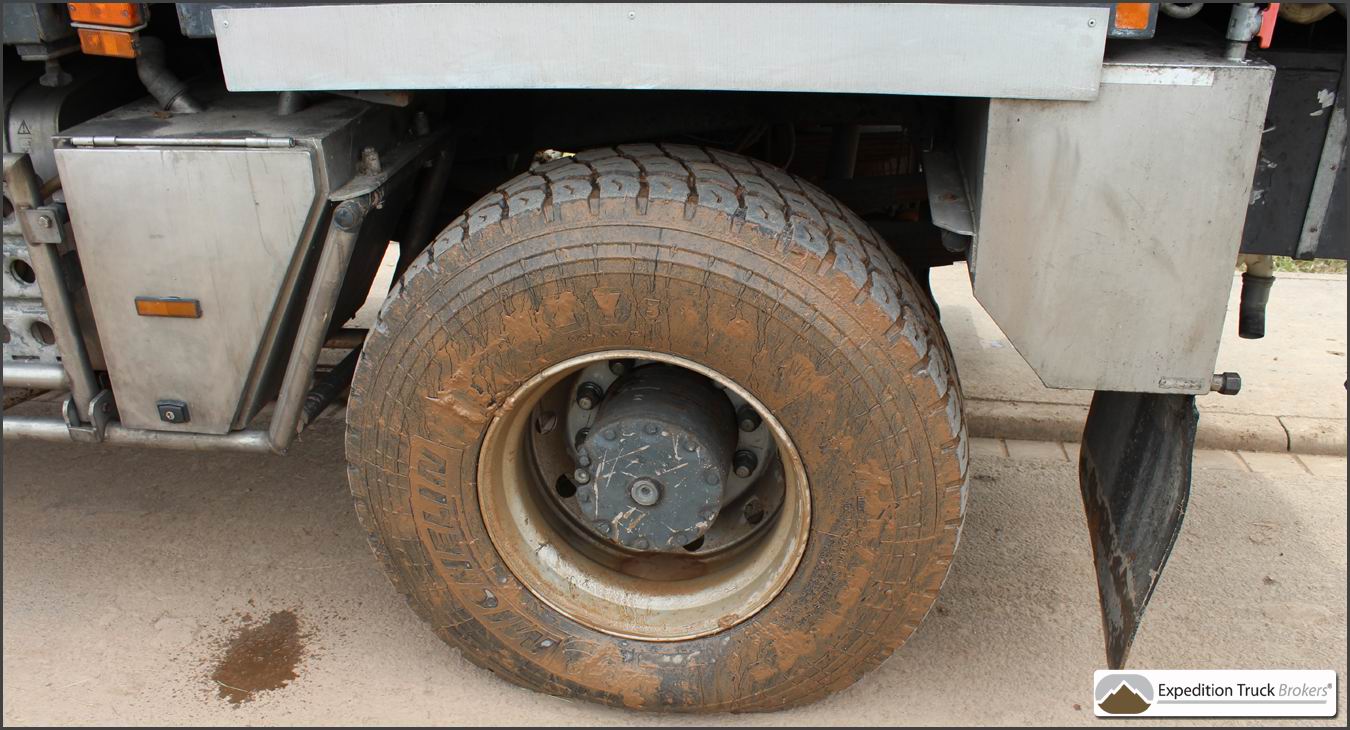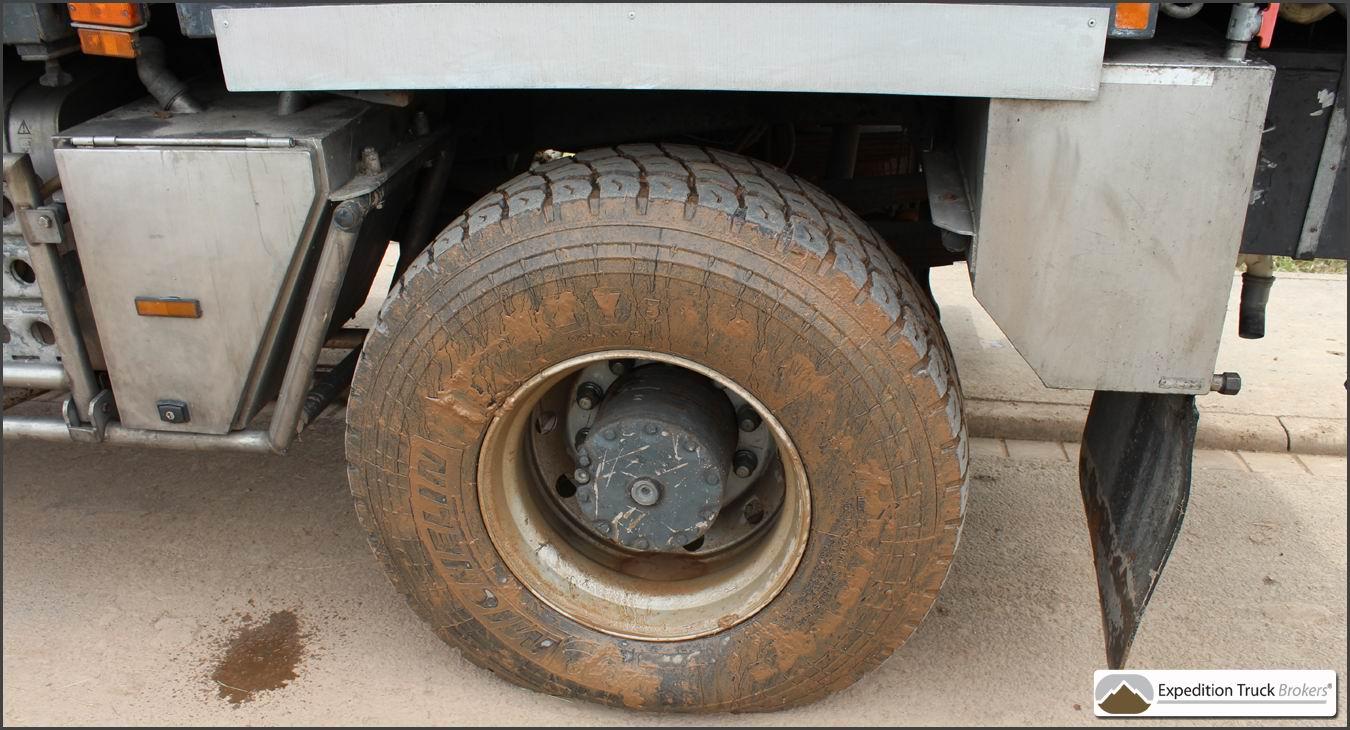Much of the mobility of an Expedition Truck in sand and mud starts with tire choice and weight (distribution) of the vehicle. In overlanding not much is known about the optimal Ground Contact Pressure (GCP) for heavy expedition trucks. This article explores GCP values for several popular tires and weights for Expedition Trucks.
Ground Contact Pressure
In the military and agricultural industry there’s been quite a bit of research to create calculations models, predicting Ground Contact Pressure (GCP). All this to avoid getting stuck by choosing the right vehicle setup. It’s a complex issue where the combination of tire inflation, soil type and the dynamics of off-road driving makes any prediction difficult.

Nonetheless, a nominal GCP reference for Expedition Trucks can help in benchmarking expedition truck tire & weight combinations.
Ground Contact Pressure calculation
The tire contact area is based on a theoretic calculation with 15% sinkage. The following simple calculation model is used by the Nordic forestry, known as NGP model. (Nomimal Ground Pressure). It can be considered as some kind of a standard for comparing the tire contact area and ground pressure for different wheels.
A = b × r
A - Footprint area, [m²]
b - Wheel width, Tire (section) width, [m]
r - Wheel radius, [m]
GCP = Wheel pressure / A in [Kg per m2]
The downside of the model is it’s simplicity resulting in a GCP which is a bit too optimistic. Actual ground contact pressure can be higher since it’s a nominal pressure calculation, not a maximum. Next to this, inflation pressure or tire profile is not taken into account. However for a fast comparison among similar vehicles at the same tire pressure the GCP value can help.
Besides this, there is no simple ground pressure model reliable enough for all the purposes. The real pressure and force distribution under a flexible surface and dynamic load depends much on adequate know how on soil properties and soil models.
Ground contact pressure examples
In the following table an overview is giving of Ground Contact Pressures for 3 vehicle weights and several popular tire sizes. The pressure values are by no means a realistic representation of actual ground pressures and should only be used as a quick comparison.
The pressure calculation is based on a - single wheel - 4x4 truck with a 40 – 60% weight distribution among front and rear axle.

# Calculations are based on the NGP model (Nominal Ground Pressure)
# Tire size dimensions are from Goodyear - Dunlop
The values are given in kPa [N / m2]. The red / yellow marks designate the 170 kPa threshold. Anything below 170 kPa is considered as a benchmark for good mobility in soft terrain for military vehicles in WWII.
The results are not surprising, the heavier the truck the higher or wider the tire to keep the GCP value low.
As comparison, a few other ground contact pressures
| Ground Pressure Example | Ground Pressure in kPa |
|---|---|
| Human male (1.8 meter tall, medium build) | 55 kPa (8 psi) |
| M1 Abrams tank | 103 kPa (15 psi) |
| 1993 Toyota 4Runner / Hilux Surf | 170 kPa (25 psi) |
| Average Passenger car | 205 kPa (30 psi) |
| Mountain bike | 245 kPa (40 psi) |
| Racing bicycle | 620 kPa (90 psi) |
Source : Wikipedia Ground Pressure article with an unknown GCP calculation method
Here's an example of a Michelin XZY-3 425/65R22.5 tire deflated to around 2.5 Bar. The foot print is largely increased reducing Ground Contact Pressure.

However in muddy terrain this tire performs below average because it misses an aggressive profile. Though the same tire in sand will perform quite good.

